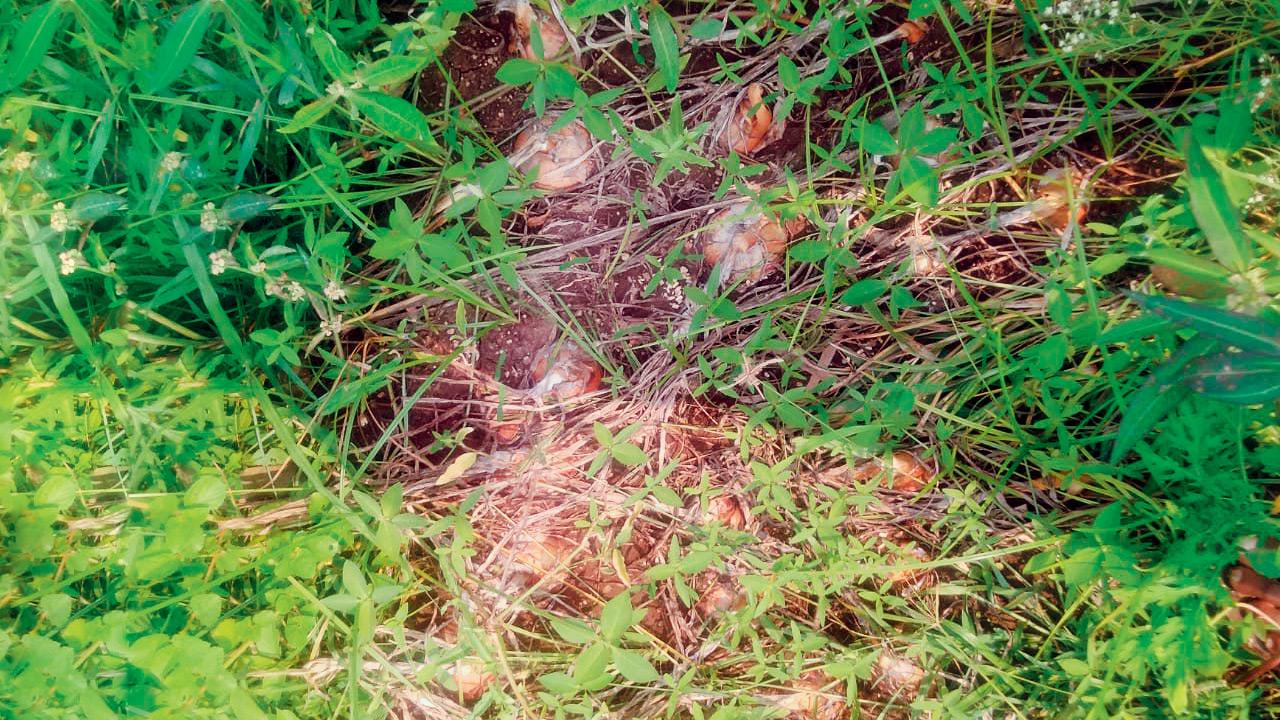Unseasonal rain devastated Maharashtra’s onion crops, trigger price rise fears
Over 20 days of consecutive downpour devastates state’s bumper crop; farmers stare at massive losses and price surge. Bharat Dighole, founder-president of the Maharashtra State Onion Producers Farmers Association, told mid-day, “Rain in May isn’t unusual for farmers, but this time,this prolonged spell has caused unprecedented damage

For the first time in recent history, over 20 consecutive days of unseasonal rain have wreaked havoc on onion farmers in Maharashtra, with significant losses reported across key producing districts, particularly Nashik, the country’s largest onion-growing region. The continuous rainfall, which began in early May, has not only damaged standing onion crops but also spoiled harvested produce, leaving thousands of farmers in distress.
Bharat Dighole, founder-president of the Maharashtra State Onion Producers Farmers Association, told mid-day, “Rain in May isn’t unusual for farmers, but this time, it has continued for more than 20 days with increasing intensity. This prolonged spell has caused unprecedented damage. Nobody warned us it would last this long.”
He added, “Farmers are facing two types of losses — damage to standing crops in the fields, and to harvested onions stored in the open. Traditionally, farmers pile harvested onions under trees or near their homes before storing them in kandachals (onion storage sheds). This time, even those kept under plastic covers couldn’t withstand the heavy downpour.”
Bharat Dighole, founder-president of the Maharashtra State Onion Producers Farmers Association
Unseasonal rainfall has been reported in major onion-producing districts, including Nashik, Pune, Dhule, Chhatrapati Sambhajinagar, Solapur, Beed, Dharashiv, Akola, Jalna, Buldhana, and Jalgaon. These regions have experienced continuous rainfall since May 6, affecting both Rabi crops ready for harvest and those already harvested.
Nashik, the largest onion-producing region in India, has witnessed a sharp rise in cultivation this year. In 2024–25, onions were cultivated on a record 2,90,136 hectares in Nashik, compared to 1,67,285 hectares in 2023–24 and 2,48,417 hectares in 2022–23. Statewide, onion cultivation was on 5.53 lakh hectares in 2022–23, fell to 4.64 lakh hectares in 2023–24, and surged to 6.52 lakh hectares in 2024–25, indicating a heavy reliance on this season’s output.
“Farmers who harvested their crops before March got a good yield, but those who waited until April or May have suffered due to extreme heat followed by continuous rain,” Dighole said. “Most farmers don’t have proper storage facilities. Those who kept onions in the open are facing the worst losses.”
The financial impact is yet to be fully assessed as rainfall continues in several areas and official inspections (panchnamas) are pending. At Lasalgaon, Asia’s largest onion market located in Nashik, prices were Rs 1150 per quintal as of May 20. Aba Mahajan from Yeola taluka Tahsildar office confirmed that even stored onions have suffered damage in some areas. With supply chains disrupted and crop losses mounting, market experts fear that onion prices could rise sharply in the coming weeks.

 Amritpal Singh Sanhotra
Amritpal Singh Sanhotra 





